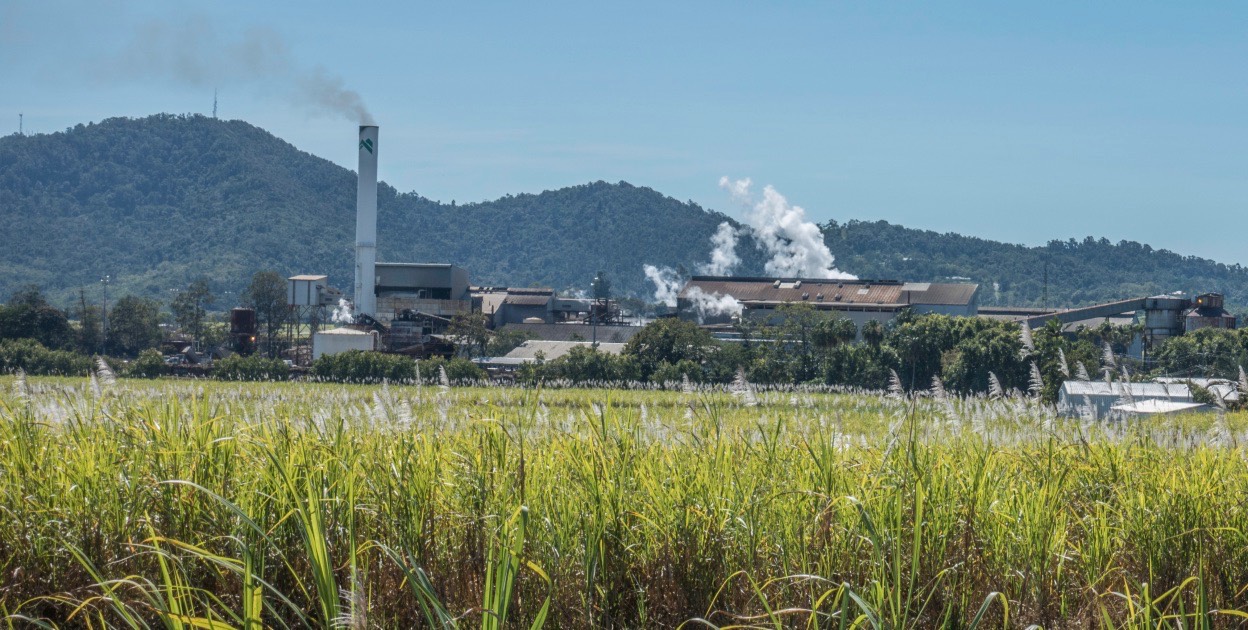 We were only a few kms north of Mackay when we saw a sign saying “Sugar Mill Tours”. Having never been in a sugar mill and Austin loving his sweets, we followed the signs through sugar cane fields with anticipation! Arriving at the mill, where a small tour group was already assembled, we were issued with hairnets, safety helmets, ear plugs and those brightly coloured construction worker jackets which we wore over our mandatory long-sleeved tops and long slacks.
We were only a few kms north of Mackay when we saw a sign saying “Sugar Mill Tours”. Having never been in a sugar mill and Austin loving his sweets, we followed the signs through sugar cane fields with anticipation! Arriving at the mill, where a small tour group was already assembled, we were issued with hairnets, safety helmets, ear plugs and those brightly coloured construction worker jackets which we wore over our mandatory long-sleeved tops and long slacks.
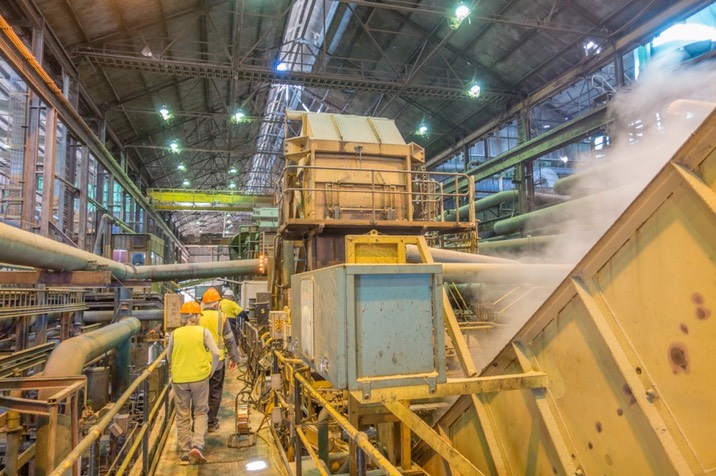
Entering the mill I wondered, if any of the gear was a necessity or just a farce of today's OH & S requirements. The mill looked like a third world factory or at least a construction of bygone times. It was actually built 130 years ago and, in spite of some renovations and replacements over time, it showed. 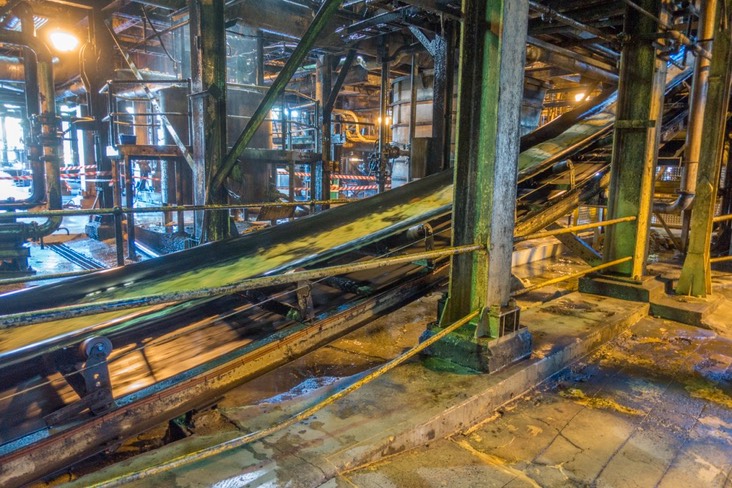
I can’t really “sugar coat” the fact that walking around the cane crushers, boilers and distillers across wet and sticky metal floors we didn’t feel entirely safe. Everything was covered with dust from the cane crushers, some structures looked a little rusty and patch-worked together. I didn’t get the hairnets part at all, however, would have liked non-slip shoes and a gas mask, as the smell, a mixture of rotting hay and sticky toffee, was quite sickening. We definitely needed the ear plugs, well most of us, Austin just adjusted his hearing aids, although this also blocked out some of the tour guides explanations.
And yet, it was still a worth while learning experience. This mill, together with another two of the Mackay area crush 5,3 million tonnes of sugar cane a season. Seven tonnes of cane produce 1 tonne of raw sugar. Australia produces about 45 million tonnes per year of which 85% is exported.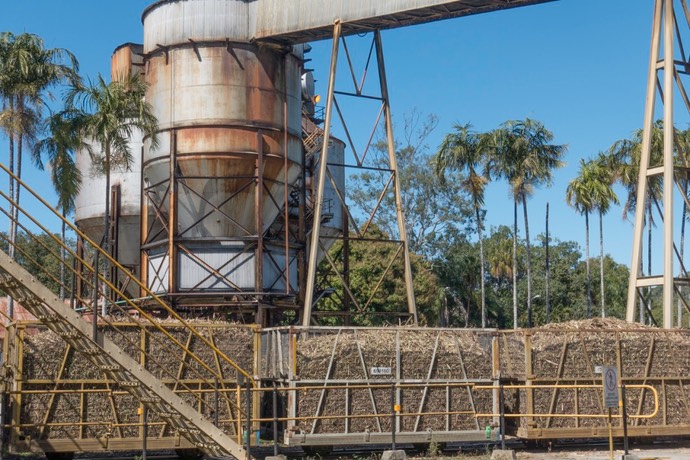
We all know the cane fires, so necessary in earlier times to rid the fields of rodents and soften the sharp stalks. Nowadays with improved pest control and machine cutting of the cane this is rarely done. The cane arrives in wire carriages of long trains which are then loaded onto the belt going to a weighing bridge.
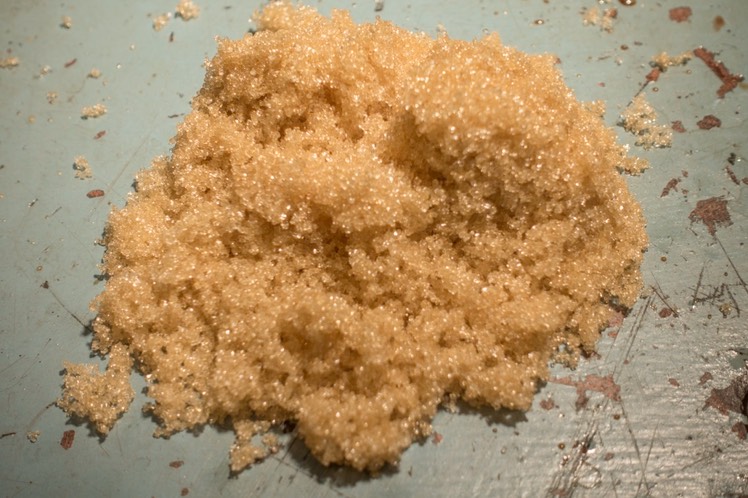
Diverse crushers and centrifuges processes the cane leaving dust and fibres covering everything. Eventually a mud-like substance is separated from the molasses. Some of the lower grade molasses goes e.g. to Bundaberg Rum while molasses being further heated, spun and crystallised ends up as raw sugar.
Having tasted various grades of molasses we came away quite hot and sticky and were glad to drop our “safety gear” and be on our way to Airlie Beach. Whether this “sickly-sweet” experience does anything to cure Austin’s sweet tooth is yet to be seen.
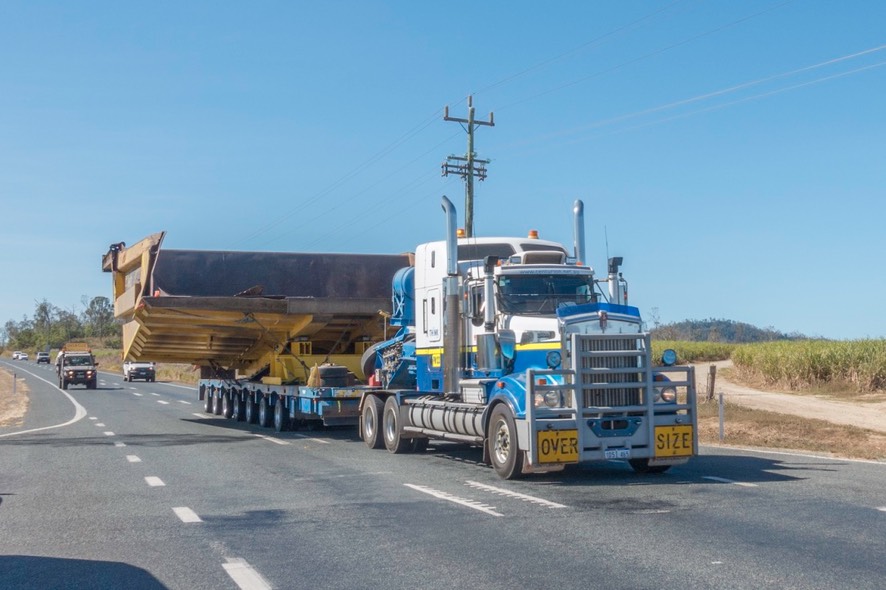
We had to wait for cows, kangaroos, emus crossing, but this wide load went across the entire highway! Luckily there was a bay at the side of the road to pull over!